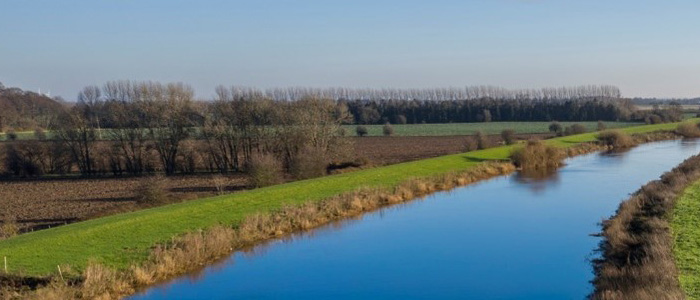This article provides guidance on the flood risk to your property or site when applying for planning permission. The content is neither exhaustive nor prescriptive, but you must demonstrate to your Local Planning Authority (LPA) that you have considered and taken steps to manage flood risk as part of your development proposal. By the end of this concise guide, you’ll be able to carry out a simple flood risk assessment yourself.
Carrying Out a Flood Risk Assessment (FRA)

What is a Flood Risk Assessment (FRA)?
A flood risk assessment (FRA) identifies the level of flood risk to your property or site. It will consider the flood risk posed by several water sources, including groundwater, river (fluvial), surface water (pluvial), estuary/coastal (tidal), and sewers. An FRA also considers the flood risk posed to your site’s surrounding area.
What data is used for flood modelling?
Businesses usually gather their flood modelling data from third party sources, such as the Environmental Agency modelling and independent data generated by private flood modelling companies.
What is an FRA for?
An FRA will help identify the necessary measures (if any) to make your property or site as safe as possible. FRAs also enable the LPA to assess the flood risk severity and to what extent it’ll determine your planning application.
Do I need to carry out an FRA?
In accordance with the National Planning Policy Framework (NPPF) and the Environment Agency (EA), flood risk assessments are required for sites and properties located in:
- Flood Zone 2 or 3
- A Critical Drainage Area (CDA)
FRAs are also mandatory for:
- Sites greater than or equal to 1 hectare (in Flood Zone 1)
- Site located within 20 metres of an EA main river
If your site includes temporary or permanent works within 8m of an EA river or 16m of a tidal EA river, you’ll need to obtain an EA activity permit.
What type of FRA do I need?
The complexity of your FRA depends on the flood risk – this can be anything from a short written statement to sophisticated hydraulic modelling. The risk level will depend on the type of development, site size, and its proximity to flood plain areas. The volume of surface water runoff the site discharges will also be considered. You can find flood plain areas by entering the site postcode, nearest town, or place name on the EA’s website.
Is my development in a flood zone?
The Environmental Agency provides a free service enabling you to check if your development is within a flood zone. There are two maps you should check. The first is the ‘Flood Map for Planning’, which delineates between the different Flood Zones; you can find it here.
The second is the ‘Long Term Flood Risk Map for England’, which assesses flood risk from rivers and seas and discusses surface water flooding. These examples apply to England only, but you can find further information here and on the devolved nations’ websites.
Using the two maps, you should identify your site’s Flood Zone and whether you require an FRA.
Simple FRA
This simple FRA would be sufficient for a Local Planning Authority (LPA):
| Zone | Colour on Environment Agency Flood Map URL | Development Size | |
|
White | All development less than 5 ha (12.5 acres) | |
|
Light blue | All development less than 1 ha (2.5 acres) | |
|
Dark blue | Domestic, commercial, and industrial extensions less than 250m2 |
Simple FRA statement
The following guide explains how to record an FRA statement:
|
You can find out which flood zone a site is in here |
|
Contact your local Environment Agency office |
|
Contact your local Environment Agency office |
|
You can find this information on ordnance survey maps or by conducting a survey to Ordnance Datum Level |
|
Finished floor levels, ground levels, and road levels – to ordnance datum |
|
Off mains drainage or Sustainable Drainage Systems (SuDs – soakaways, attenuation, swales etc., controlling the rate of discharge). |
Comments
Latest Blogs

An updated guide by consumer organization Which? looks at how to protect people’s ears. They focus on two main types of ear protection, earplugs and ear defenders.

A review submitted by the Department of Work and Pensions (DWP) has recommended that the Health and Safety Executive (HSE) should compel employers to improve their behaviour in issues of workplace health and safety.

Drivers are being urged to consider their footwear choices when behind the wheel, particularly during hot summer days when flip-flops are popular.

Leave a comment